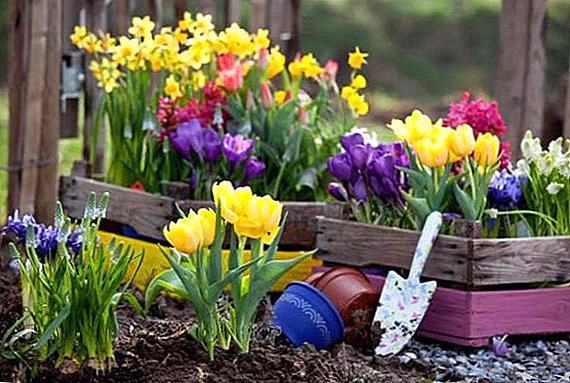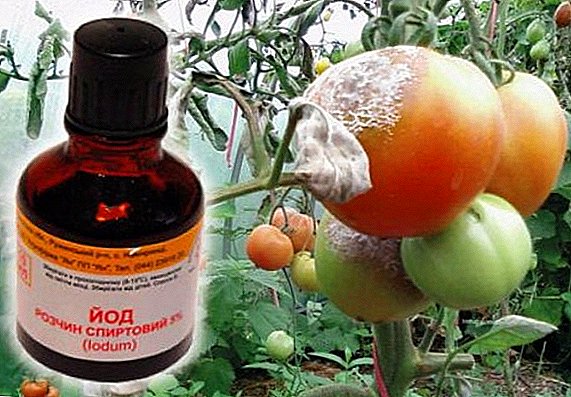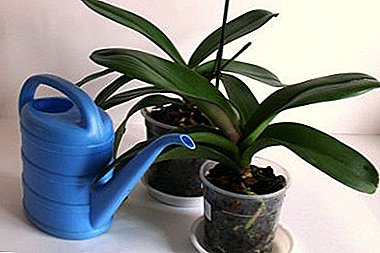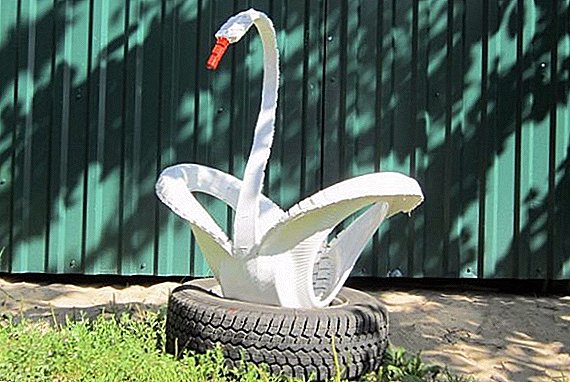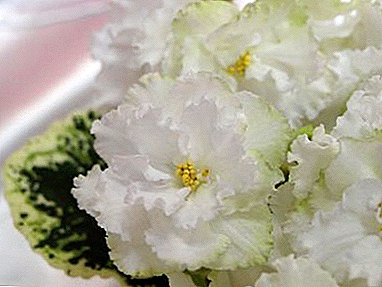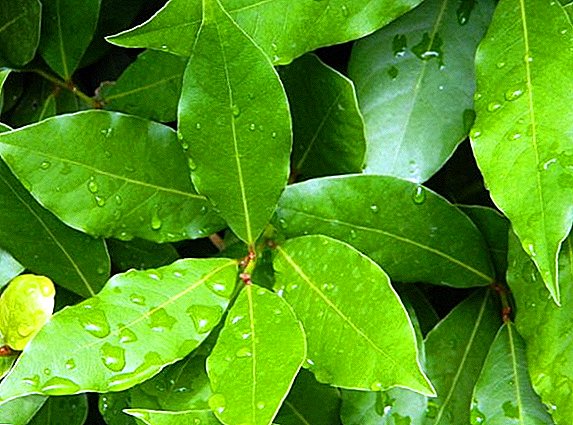 Growing plants by grafting is the most popular way of their vegetative propagation and laurel in this regard is far from an exception. Growing a laurel from a cutting is not that difficult, especially considering the following nuances.
Growing plants by grafting is the most popular way of their vegetative propagation and laurel in this regard is far from an exception. Growing a laurel from a cutting is not that difficult, especially considering the following nuances.
Reproduction of laurel at home: harvesting cuttings
For vegetative propagation using this method, semi-woody cuttings that can be obtained from another plant are ideal. If you still do not have an adult donor laurel, then you can purchase the necessary parts separately.
When they proceed to the cutting of laurel
 Laurel cuttings are usually carried out with the onset of the first warm days, cutting off the shoots in April or early June.
Laurel cuttings are usually carried out with the onset of the first warm days, cutting off the shoots in April or early June.
The selected plant (preferably with annual shoots that have not yet had time to lumber) must completely move away from winter dormancy.
Some gardeners carry out the cutting process in deep autumn, but in this case you will not be able to plant the cuttings in a greenhouse or garden.
How to prepare cuttings
For harvesting cuttings, branches of laurel, taken from the middle or lower part of the shoots are cut into pieces of 6-8 cm each. Such a stalk should have at least three internodes (three free areas between the attachment points of the leaves) and an oblique cut in the lower part.
The first leaflets are completely removed, and the upper ones are cut only slightly, leaving half of the leaf for the purpose of minimal evaporation of moisture.
Important! When cutting the stalk, the knife should be kept a little before reaching the end of the shoot, and then the bark should be torn off along with the surrounding tissues. It turns out such a heel itself, located slightly below the lower node.
How to choose a finished cutting when buying
 If you need laurel cuttings, but you do not want to think about how to grow them yourself, then you can purchase ready-made, rooted copies.
If you need laurel cuttings, but you do not want to think about how to grow them yourself, then you can purchase ready-made, rooted copies.
They are ideal for planting in open ground, so you can quickly get a full-fledged plant.
However, before buying the first cuttings, examine them well. Bay leaf is often damaged by the shield, which is easy to see on the cuttings.
There should be no suspicious growths on the shoot, and it should have an elastic form. With overdried cuttings will be of little use.
How to root a bay leaf cutting
The reproduction of laurel cuttings can be done in two main ways: using a prepared substrate or by rooting in ordinary water.
Rooting of laurel in the substrate
Ideal soil for rooting laurel cuttings will be coarse sand, or a mixture of sand and peat. Also, turf soil and sand are often used (First, a layer of drainage is poured into the pot, then a layer of soddy earth, and a layer of sand is poured on top.).
After that, the resulting substrate must be well moistened and plant cuttings to a depth of 1-1.5 cm according to the 10x10 scheme.
 To ensure better contact of the cutting with sand, the latter is compressed slightly with fingers, and in order to maintain the required air humidity, a plastic bag is put on the pot on top of the pot (by placing pegs near the cutting, you prevent its contact with polyethylene).
To ensure better contact of the cutting with sand, the latter is compressed slightly with fingers, and in order to maintain the required air humidity, a plastic bag is put on the pot on top of the pot (by placing pegs near the cutting, you prevent its contact with polyethylene).
The rooting of laurel cuttings itself is quite difficult, so before you put the cut cuttings into such a substrate, treat them with a growth stimulator (for example, with Kornevin or Hetero-ax).
A pot with cuttings should be placed in a mini greenhouse or covered with a glass jar. The optimum temperature for laurel, at least at the stage of rooting, the cutting is within + 24 ... +25 (with temperature indicators + 16 ... + 20 ° C, the cuttings will root for more than a month).
In addition, to stimulate the process described, it is useful to spray the cuttings daily with water (starting with 4-5 sprays) and air them.
Strictly adhering to the cutting technology, after a month and a half, your shoots form roots. Once this happens, they can be transplanted into 7-centimeter pots with the same substrate and mode of care as in seed reproduction.
How to root cuttings in water
It is no secret that many houseplants are often rooted in a regular can or a bottle of water. It would seem that this method is not as reliable as the previous one, but it is also suitable for successful reproduction of laurel from the cutting.
 All you need to do is pour five centimeters of water into a jar and place a cutting in it. A jar of laurel is left in a dark place without changing the water (it can only be topped up).
All you need to do is pour five centimeters of water into a jar and place a cutting in it. A jar of laurel is left in a dark place without changing the water (it can only be topped up).
Some gardeners, this method works flawlessly, others complain about the rotting of the cutting, but in any case, there is still a chance for rooting. However, before placing the cutting into the container, it is better to keep it in the root formation stimulator for 24 hours, dipping by 2-3 cm.
Did you know?In order to successfully root the stalk of laurel in water, it is better to take liquid from the aquarium, where beneficial biological substances are already present.
How to plant laurel cuttings
Planting rooted cuttings of laurel is not much different from transplanting citrus plants, but you still need to know which soil is better to use and how exactly to “relocate” the plant to a new place of residence.
What soil to plant laurel
A suitable soil mixture for breeding laurel cuttings at home consists of two main parts: the bottom is 3-4 cm of sod land, and the top is 2-3 cm of sand. The ideal soil option would be a light carbonate mixture, which can be bought at any gardening shop.
Important! From the moment of planting, you will have to replant the plant every year, using the same soil composition. Upon reaching the age of five, the transplantation is carried out once every four years.
How to plant cuttings laurel
 Laurel cuttings are best planted in small pots, increasing their size with the growth of the plant.
Laurel cuttings are best planted in small pots, increasing their size with the growth of the plant.
A drainage layer is laid out on the bottom of the tank, then the soil mix is poured, and carefully removing the cuttings from the roots from the previous place of growth, they are placed at a depth of 2 centimeters. Top of the earth sprinkled with a small layer of sand and slightly moisturize.
Do not immediately flood the plant with water, as due to excessive humidity, fungal diseases may develop.
Features care for cuttings
Rooted cuttings no longer require such close attention, but still care should be organized to meet all basic needs.
Watering and spraying
Laurel is not too fond of moisture, so watering the cutting should be moderate. In summer, the plant needs more liquid and additional spraying of the sheets (can be replaced by wiping with a damp sponge), while in winter the number of waterings is significantly reduced.
In any case, the top layer of soil in a pot with a plant should always remain slightly wet.
Top dressing of a young plant
 As a fertilizer for the cuttings of laurel, complex organic and mineral compounds are used, which are easy to find in specialized stores.
As a fertilizer for the cuttings of laurel, complex organic and mineral compounds are used, which are easy to find in specialized stores.
Some gardeners claim that a mullein solution is also suitable for these purposes, but with the slightest disturbance of the dosage, the roots can simply burn out, so this method in the initial stages should be discarded.
Find the answer to the question "How to propagate the laurel cuttings?" - easy, but you have to understand that this is quite a lengthy and painstaking process, so if you urgently need a full-fledged plant with a lush crown, then it makes sense to think about acquiring a whole bush at once. In the future, you can multiply it by the already mentioned method of grafting.


